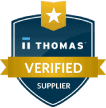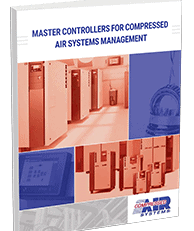Air Compressors in CNC Machining
Often considered to be the fourth utility, compressed air is used across a broad range of industries to provide power to myriad equipment ranging from heavy machinery to handheld power tools. The metalworking industry also relies heavily on compressed air to power a range of computer numerical-controlled (CNC) machining operations.
CNC machining is a manufacturing process which uses computer-controlled machine tools to create predefined shapes from a variety of materials. CNC equipment pre-programs tools using a unique machine language known as G-code. This code dictates the movement of the machinery and controls features such as feed rate, coordination, location, and speed.
CNC machine tools may include mills, lathes, routers, grinders, and many others. The precision and repeatability offered by CNC machining makes it these tools common in the fabrication of precise metal and plastic parts and components.
How Are Air Compressors Used in CNC Machining?
CNC machine tools often require compressed air to perform a number of functions. During machining operations, material is usually removed from the workpiece to achieve the desired shape. This results in chips, dust, oil, dirt, and other contaminants becoming entrapped on the cutting tools and cutting surface. These unwanted materials can impede the manufacturing process by reducing machining accuracy and can eventually cause damage to the tooling. CNC machines will typically use a blast of dry compressed air to keep areas of concern free from contaminants.
Compressed air can also be used to actuate tool changes. Digital instructions pre-programmed into the system regulate the flow of the compressed air which controls the tool changing process for rapid clamping, tightening, and release operations.
Air compressors for CNC machining can also be used in actuating robotic systems. Robots help replace manual operations such as placement, lifting, and transporting. These pneumatic systems replace servo and electric motors by instead using air pressure to power robotic movements.
Types of CNC Machines
There are several types of CNC machines used in manufacturing today. These machines work by using differing operating principles that lend themselves to particular applications and materials.
Some of the most common types of CNC machines include:
- CNC mills
CNC mills use programmable input to guide the movement of rotating tools on a spindle to cut and shape a fixed workpiece. - Lathes
Lathe machines are similar to CNC milling machines, except the workpiece is mounted on a spindle and rotated at high speeds. CNC-controlled tools then advance toward the spinning workpiece to shave it down to the desired shape. Lathe machines are also called CNC turning machines. - Plasma cutters
Plasma cutting involves sending an electric arc through a gas to create a high-powered torch with the ability to cut through a variety of metals. - Electric Discharge Machines (EDM)
EDM – also known as spark machining or spark eroding – uses electrical discharges (sparks) to generate high temperatures and pressures to cut and shape metal workpieces. - Water Jet Cutters
Water jet cutters use precisely controlled high-pressure jets of water (or a mixture of water and an abrasive substance) to cut through and shape a variety of materials.
Importance of Using Dry Compressed Air
During CNC machining, it is crucial that the compressed air used to clean exposed surfaces is sufficiently dry. Air that contains undesirable amounts of moisture can condense on colder surfaces, ultimately resulting in corrosion in the metal workpiece.
When air is compressed, heat is generated, so the air exiting the compressor is usually higher than the dew point of water. When the warm air contacts a relatively cold surface, such as the walls of the compressed air tank, condensation occurs and water droplets form on the bottom of the tank. It is essential that water in the tank is periodically or automatically drained to ensure that the air leaving the compressor nozzle is dry and the dew point is significantly lower than the external temperature.
Recommended Air Compressor Products for CNC Machining
CNC machining processes require highly specialized air compressor equipment to guarantee reliability and quality in the final product. Kaeser compressed air rotary systems, aluminum piping, low flow CEJN air guns, and coil hoses are just some of the recommended components for efficient CNC machining operations.
Nitrogen generators are also highly recommended when laser cutting stainless steel or aluminum parts. The nitrogen gas acts as a shielding agent, stopping the burning process and facilitating vaporization of the material. Nitrogen also helps remove oxygen from the cutting zone. This improves laser cutting quality and prevents oxidation, scaling, and discoloration.
CNC milling and turning involve high rotational speeds and fast material removal rates which can generate considerable amounts of heat. Chillers are therefore advised to dissipate heat generated during the machining process.
At Compressed Air Systems, we provide a wide range of compressed air solutions for a wide range of CNC machining systems. If you would to learn more about our compressed air products or services, feel free to check out our CNC machining product line.









